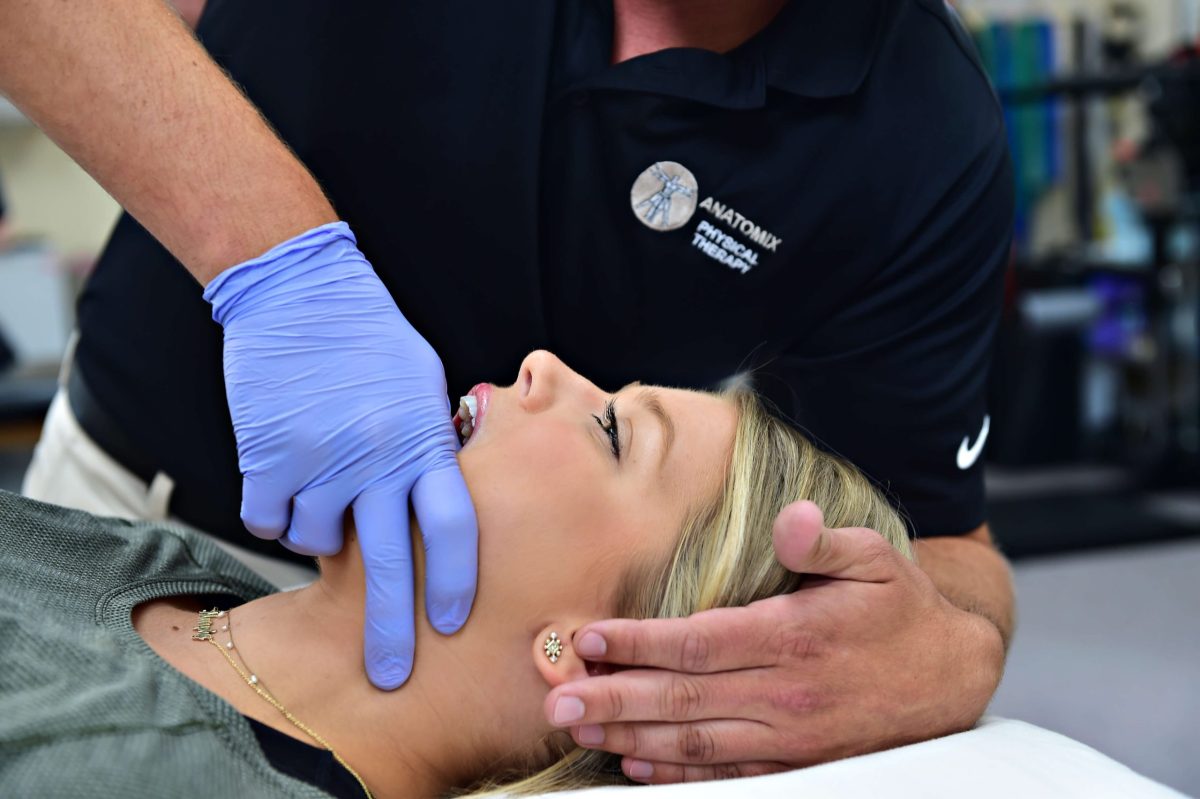Temporomandibular joint (TMJ) disorder is a complex condition that can significantly impact quality of life, making it essential to explore various treatment options. While many people immediately think of dental treatments or surgical interventions for TMJ disorders, physical therapy is a highly effective treatment option for alleviating symptoms and addressing the underlying cause of TMJ disorders.
Table of Contents
Understanding TMJ
The temporomandibular joints are the small, delicate joints that connect your jawbone to the skull. These joints play a vital role in various activities, including eating, speaking, and facial expressions. As a result, TMJ disorders can impact the ability to eat, speak, and even smile without discomfort.
Additionally, when the TMJ joints are not functioning correctly, it can lead to symptoms such as jaw pain, clicking or popping sounds, headaches, and limited jaw movement. Physical therapy can often provide relief from the symptoms of TMJ disorders. This starts with a thorough assessment to understand the underlying causes of the problem.
Causes of TMJ
Assessment and evaluation is essential to identify the underlying causes of TMJ. A precise diagnosis ensures that treatment strategies are tailored to the specific condition, leading to more effective and personalized care. Some of the causes of TMJ disorders can include:
- Stress: High levels of stress can cause teeth grinding or clenching, leading to TMJ symptoms.
- Jaw Misalignment: An improper bite or teeth misalignment can put undue pressure on the TMJ.
- Arthritis: Inflammatory conditions such as arthritis can affect the joints.
- Trauma: Physical injury to the jaw area can trigger TMJ problems.
- Habitual Jaw Clenching or Grinding: These habits can overwork the jaw muscles, causing discomfort.
Consult our physical therapists at FYZICAL Therapy & Balance Centers for tailored TMJ treatment in Mechanicsburg.
Role of Physical Therapy in TMJ Disorders
Physical therapy is an essential component of a multifaceted approach to managing TMJ. The following are some of the ways that physical therapists can help patients with TMJ:
Pain Management
Physical therapists employ a range of techniques to alleviate pain, including manual therapies, modalities like heat and cold packs, and gentle exercises. These therapies help reduce inflammation, ease muscle tension, and promote relaxation of the jaw.
Muscle Strengthening and Stretching
Physical therapists design personalized exercise programs that focus on strengthening the jaw muscles and improving their flexibility. This can help address muscle imbalances and promote proper joint function.
Posture and Alignment Correction
Poor posture and head positioning can exacerbate TMJ symptoms. Physical therapists work with patients to correct these issues through posture training and alignment techniques.
Manual Therapy
Hands-on techniques, such as massage and myofascial release, can be employed to release tension in the muscles around the jaw, promoting better joint mobility.
Education and Lifestyle Modifications
Physical therapists educate patients about lifestyle factors that may be exacerbating their TMJ symptoms, such as stress, diet, and poor oral habits. They provide guidance on how to make necessary adjustments to reduce stress on the jaw joints.
Biofeedback and Relaxation Techniques
These strategies can help patients become more aware of their muscle tension and learn to relax their jaw muscles consciously.
Pain Relief Modalities
Techniques such as ultrasound, electrical stimulation, and low-level laser therapy may be used by physical therapists to relieve pain and promote healing.
The Benefits of Physical Therapy in TMJ Management
The role of physical therapy in TMJ management is not limited to pain relief but extends to several other advantages:
- Non-Invasive Approach: Physical therapy offers a non-surgical, non-pharmacological treatment option, reducing the risk of side effects and complications associated with medications and surgeries.
- Personalized Care: Physical therapists develop individualized treatment plans based on a patient’s specific needs and symptoms, ensuring that the therapy is tailored to each person.
- Preventative Measures: Physical therapy helps individuals learn techniques to prevent TMJ symptoms from worsening and recurring.
- Cost-Effective: Compared to more invasive treatments, physical therapy is often a more cost-effective option for TMJ management.
- Improves Quality of Life: By reducing pain, enhancing jaw function, and promoting relaxation, physical therapy can significantly improve a patient’s overall quality of life.
- Complementary Approach: Physical therapy can be used alongside other treatments, such as dental interventions or medications, to enhance the overall effectiveness of TMJ management.
The Path To Relief And Recovery From TMJ Disorders
Physical therapy plays an essential role in the management and treatment of TMJ disorders. Physical therapists use a non-invasive, personalized approach that focuses on reducing pain, restoring jaw function, and improving overall quality of life for those suffering from TMJ disorders. Through a combination of manual therapy, exercise, posture correction, and education, physical therapists offer a holistic solution to help patients regain control of their jaw health and well-being. If you’re experiencing TMJ symptoms, don’t underestimate the benefits of physical therapy in your journey towards relief and recovery. Learn more about the role of physical therapy in Mechanicsburg at FYZICAL Therapy & Balance Centers.


 Home
Home










